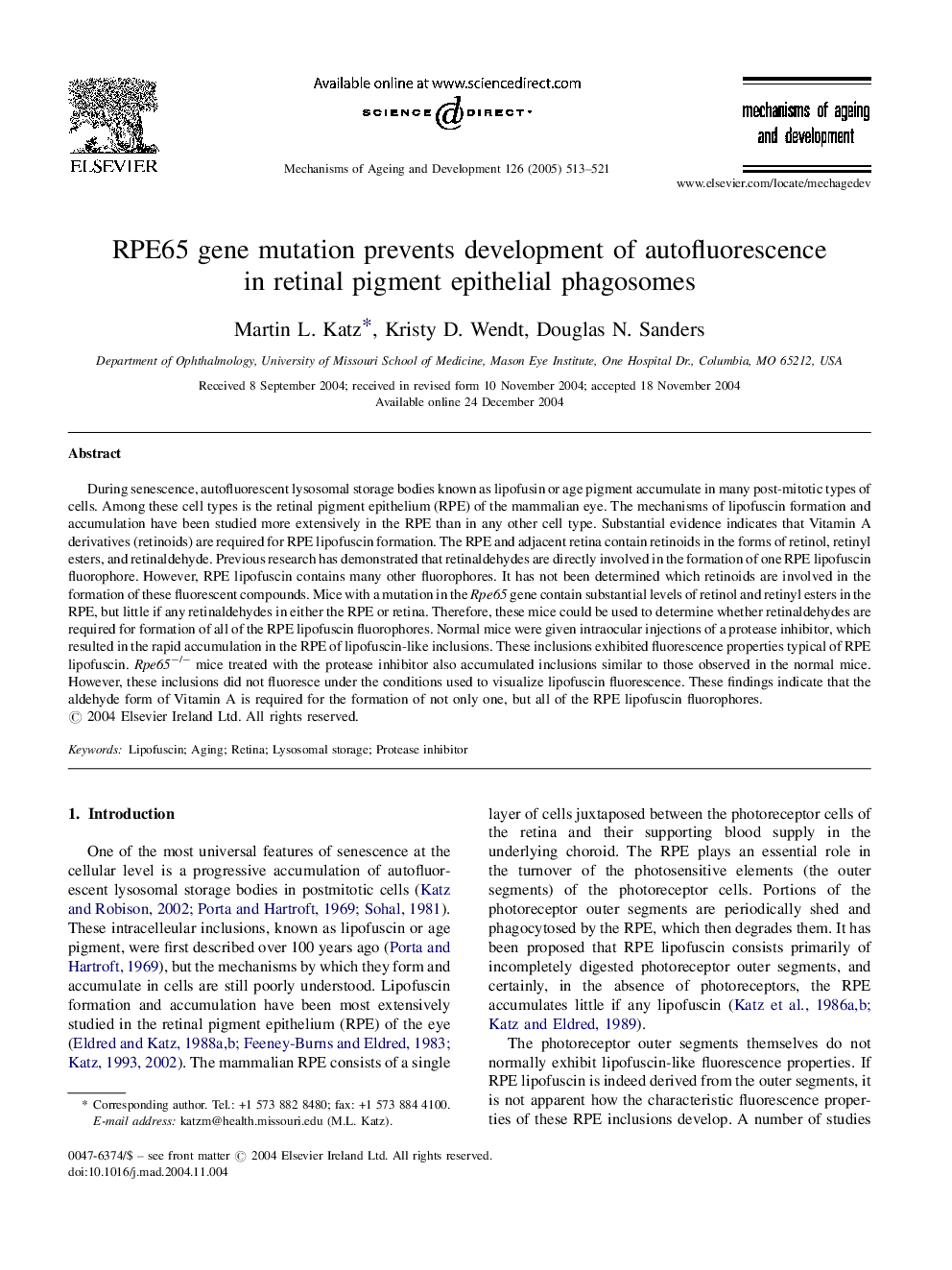| Article ID | Journal | Published Year | Pages | File Type |
|---|---|---|---|---|
| 9881333 | Mechanisms of Ageing and Development | 2005 | 9 Pages |
Abstract
During senescence, autofluorescent lysosomal storage bodies known as lipofusin or age pigment accumulate in many post-mitotic types of cells. Among these cell types is the retinal pigment epithelium (RPE) of the mammalian eye. The mechanisms of lipofuscin formation and accumulation have been studied more extensively in the RPE than in any other cell type. Substantial evidence indicates that Vitamin A derivatives (retinoids) are required for RPE lipofuscin formation. The RPE and adjacent retina contain retinoids in the forms of retinol, retinyl esters, and retinaldehyde. Previous research has demonstrated that retinaldehydes are directly involved in the formation of one RPE lipofuscin fluorophore. However, RPE lipofuscin contains many other fluorophores. It has not been determined which retinoids are involved in the formation of these fluorescent compounds. Mice with a mutation in the Rpe65 gene contain substantial levels of retinol and retinyl esters in the RPE, but little if any retinaldehydes in either the RPE or retina. Therefore, these mice could be used to determine whether retinaldehydes are required for formation of all of the RPE lipofuscin fluorophores. Normal mice were given intraocular injections of a protease inhibitor, which resulted in the rapid accumulation in the RPE of lipofuscin-like inclusions. These inclusions exhibited fluorescence properties typical of RPE lipofuscin. Rpe65â/â mice treated with the protease inhibitor also accumulated inclusions similar to those observed in the normal mice. However, these inclusions did not fluoresce under the conditions used to visualize lipofuscin fluorescence. These findings indicate that the aldehyde form of Vitamin A is required for the formation of not only one, but all of the RPE lipofuscin fluorophores.
Related Topics
Life Sciences
Biochemistry, Genetics and Molecular Biology
Ageing
Authors
Martin L. Katz, Kristy D. Wendt, Douglas N. Sanders,
